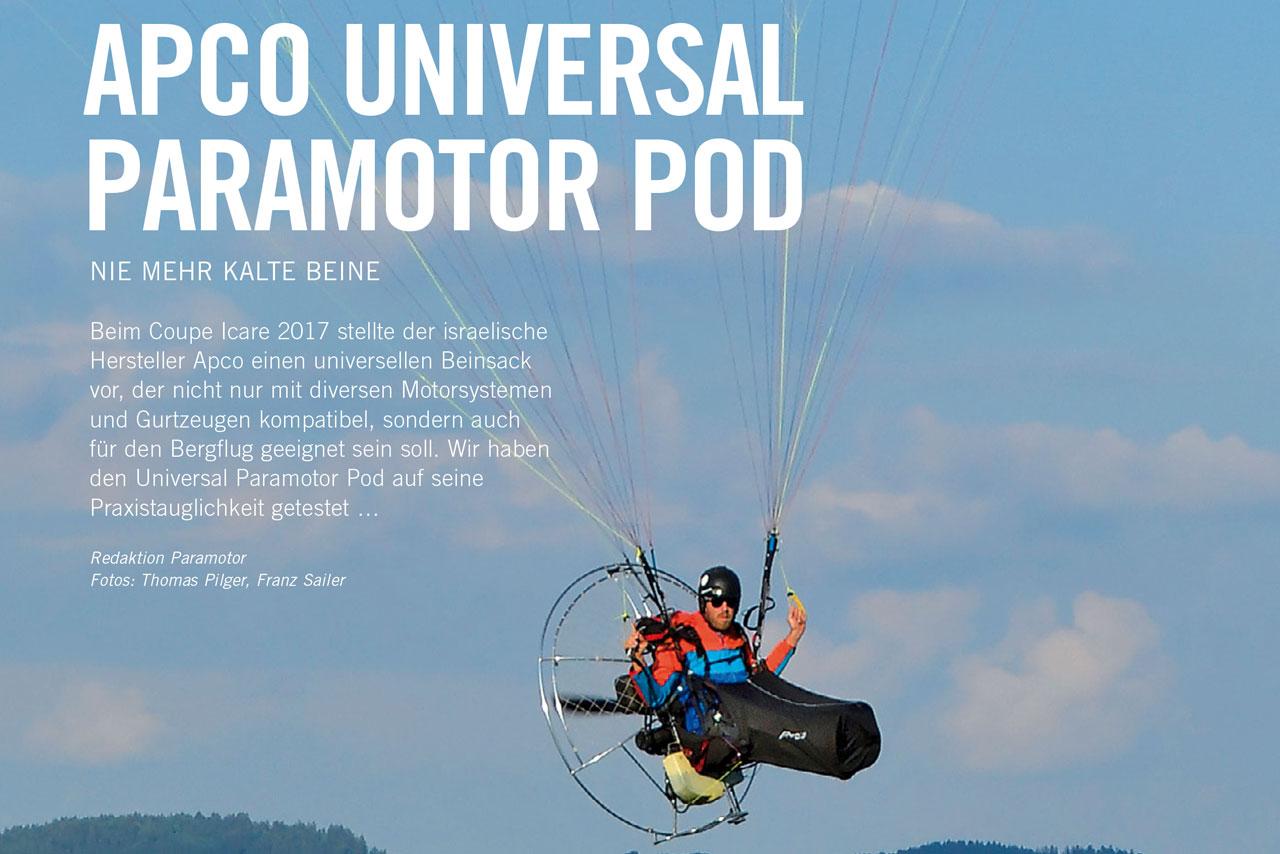
NIE MEHR KALTE BEINE
Beim Coupe Icare 2017 stellte der israelische Hersteller Apco einen universellen Beinsack vor, der nicht nur mit diversen Motorsystemen und Gurtzeugen kompatibel, sondern auch für den Bergflug geeignet sein soll. Wir haben den Universal Paramotor Pod auf seine Praxistauglichkeit getestet …


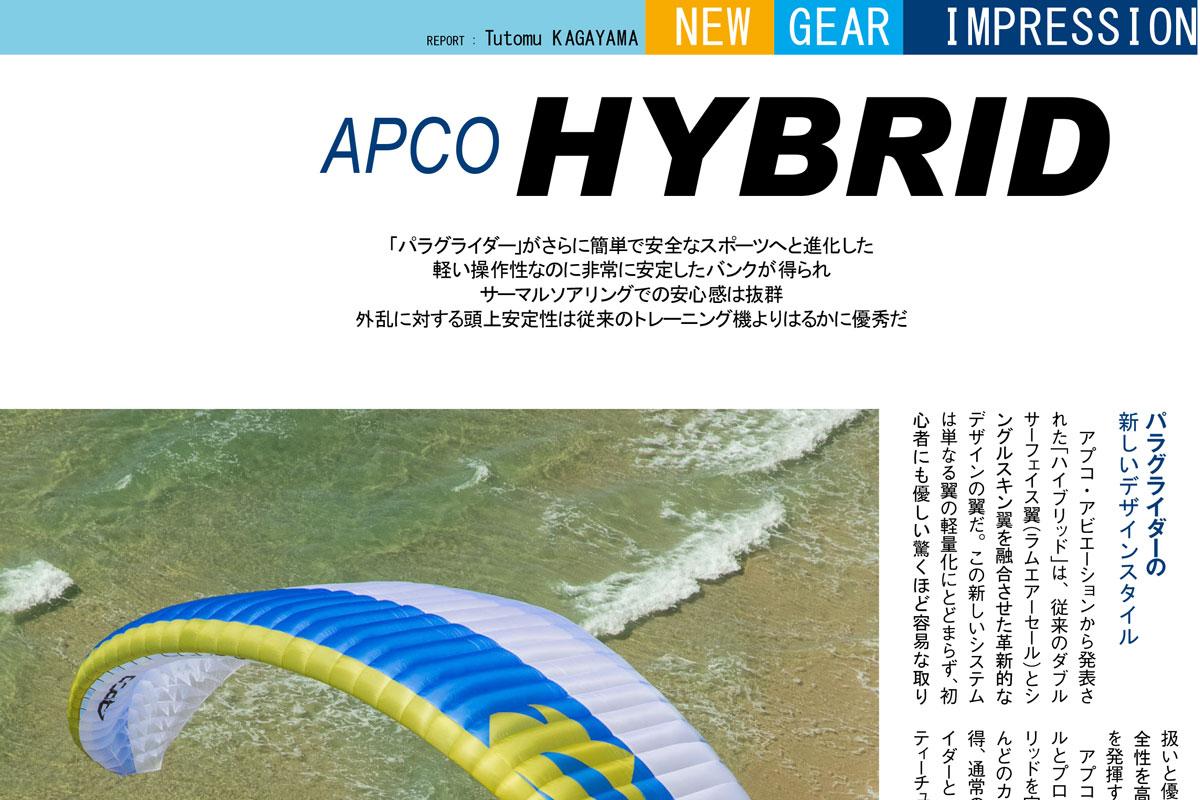

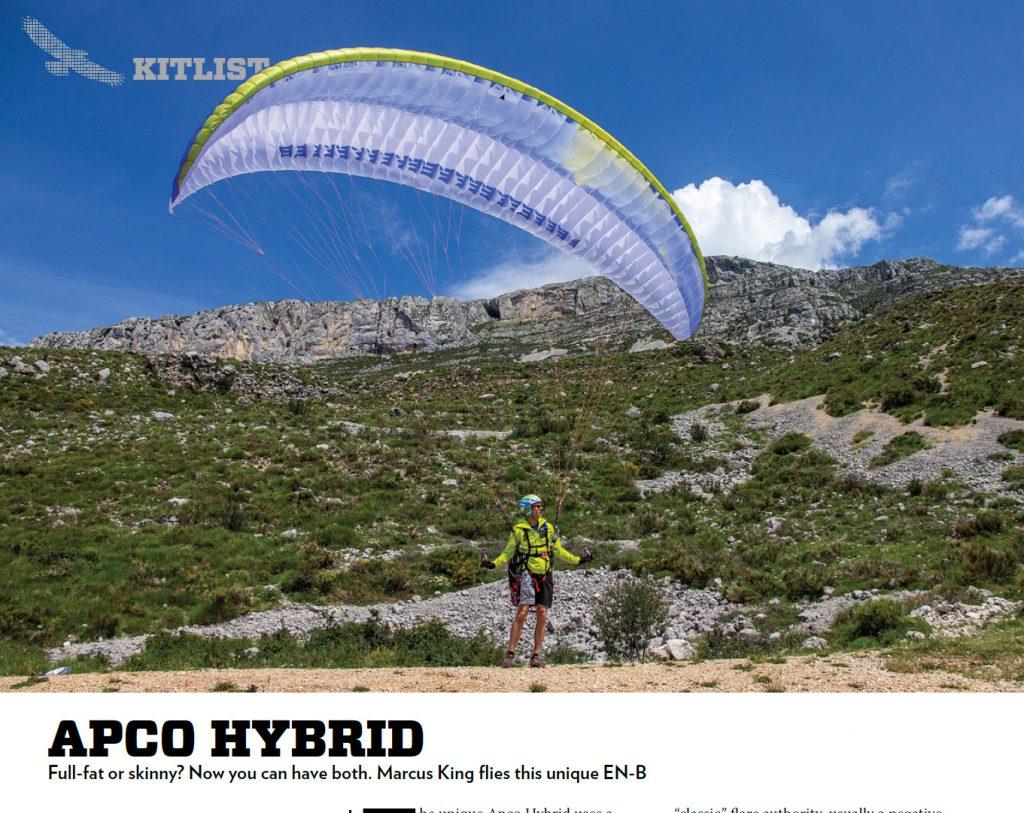
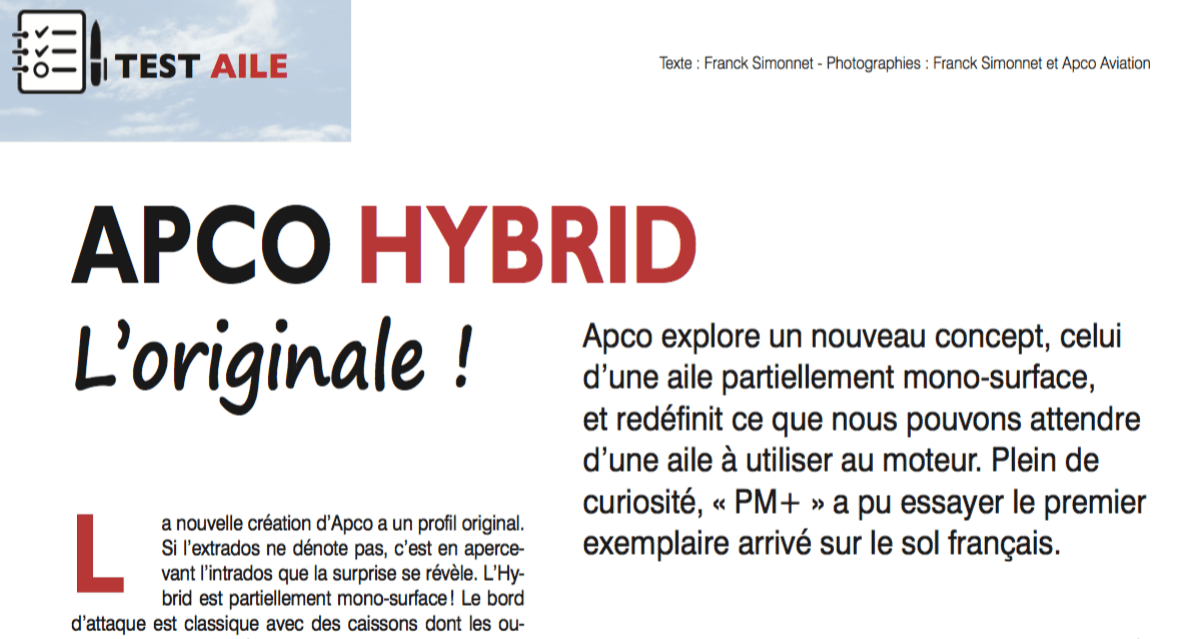
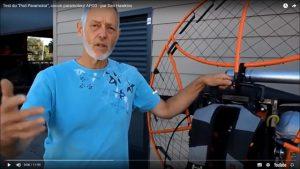 Ce cocon s’adresse aux paramotoristes qui réalisent de longues ballades, qui ne veulent pas voler en combinaison l’été. Avant l’acquisition, pensez à l’emplacement de votre secours, notamment si celui-ci est sous l’assise de votre sellette (incompatible dans ce cas) ! Pour le test, Dan a utilisé un secours en ventrale connecté aux mousquetons. Celui-ci vient se poser sans problème sur le dessus du cocon.
Ce cocon s’adresse aux paramotoristes qui réalisent de longues ballades, qui ne veulent pas voler en combinaison l’été. Avant l’acquisition, pensez à l’emplacement de votre secours, notamment si celui-ci est sous l’assise de votre sellette (incompatible dans ce cas) ! Pour le test, Dan a utilisé un secours en ventrale connecté aux mousquetons. Celui-ci vient se poser sans problème sur le dessus du cocon.
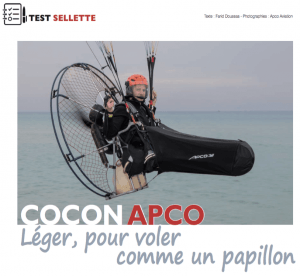 Ceux qui ont fait du parapente connaissent les lourdes et encombrantes sellettes en forme de menhir… Apco fait fort avec un cocon léger, très léger et bien pensé, à un prix abordable. Il est bien entendu adaptable sur les sellettes paramoteur et pourrait être aussi utile en parapente.
Ceux qui ont fait du parapente connaissent les lourdes et encombrantes sellettes en forme de menhir… Apco fait fort avec un cocon léger, très léger et bien pensé, à un prix abordable. Il est bien entendu adaptable sur les sellettes paramoteur et pourrait être aussi utile en parapente.